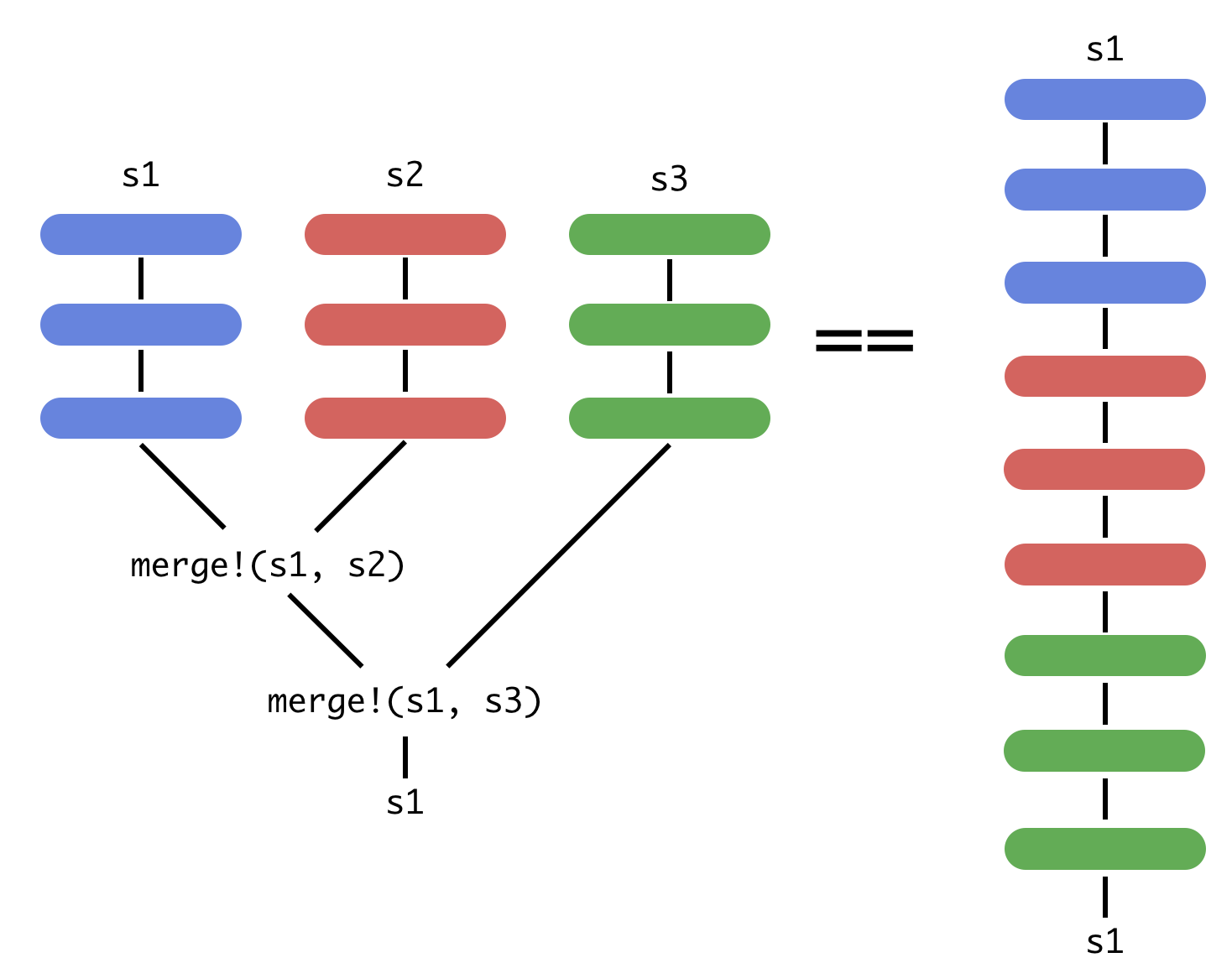In many data science applications, it is easy to run out of memory when working with data. An analyst working with big data has a few options available to them:
-
Buy more RAM.
-
Rent RAM with a cloud-based service.
-
Use a sample of the dataset.
-
Buy a SAS license.
None of these options are particularly good solutions.
Introducing JuliaDB
With JuliaDB, one can easily read big data, save it in an efficient binary format, and even run operations out-of-core. Analytics are available via OnlineStats integration, making statistical calculations on big data a breeze.
OnlineStats implements on-line (single-pass) algorithms for statistics and models, meaning you can run analyses like linear regression on data that is too big to fit in memory. Every statistic/model in OnlineStats also supports merging, enabling parallel processing. The combination of on-line updating/merging eliminates the need for the entire dataset to be loaded into RAM simultaneously, allowing analyses that would not be possible with traditional methods. Below is a visualization of how JuliaDB integrates with OnlineStats by scheduling the updating and merging operations:

Example
From Kaggle's Huge Stock Market Dataset, there are over 7000 CSVs with historical price data (each stock's history in a different file). JuliaDB can quickly load them into a distributed dataset and perform group-by operations:
using Distributed
addprocs(4)
@everywhere using JuliaDB, OnlineStats
# 7195 CSVs with 14,887,665 rows
files = glob("*.txt", "Stocks")
t = loadtable(files, filenamecol=:Stock)
groupreduce(Mean(), t, :Stock; select=:Volume)Distributed Table with 7163 rows in 4 chunks:
Stock Mean
──────────────────────────────────────────────
"a.us.txt" Mean: n=4521 | value=3.9935e6
"aa.us.txt" Mean: n=12074 | value=3.33776e6
"aaap.us.txt" Mean: n=505 | value=1.49989e5
"aaba.us.txt" Mean: n=5434 | value=2.3218e7
"aac.us.txt" Mean: n=785 | value=2.20441e5
"aal.us.txt" Mean: n=989 | value=1.00454e7
"aamc.us.txt" Mean: n=1211 | value=17644.4
"aame.us.txt" Mean: n=2926 | value=6715.76
"aan.us.txt" Mean: n=3201 | value=7.13972e5
"aaoi.us.txt" Mean: n=1041 | value=7.94087e5
"aaon.us.txt" Mean: n=3201 | value=2.04258e5
"aap.us.txt" Mean: n=3201 | value=1.22519e6
"aapl.us.txt" Mean: n=8364 | value=1.06642e8
"aat.us.txt" Mean: n=1717 | value=2.15145e5
"aau.us.txt" Mean: n=3177 | value=1.86901e5
"aav.us.txt" Mean: n=3199 | value=4.28732e5
"aaww.us.txt" Mean: n=3162 | value=2.64112e5
"aaxn.us.txt" Mean: n=3201 | value=1.40883e6
"ab.us.txt" Mean: n=3201 | value=5.60349e5
⋮Main Features
Just-in-Time Compiled
JuliaDB leverages Julia’s just-in-time compiler (JIT) so that table operations – even custom ones – are fast.
Compute in Parallel
Process data in parallel or even calculate statistical models out-of-core through integration with OnlineStats.jl.
Store Any Data Type
JuliaDB supports Strings, Dates, Float64… and any other Julia data type, whether built-in or defined by you.
Fast User-Defined Functions
JuliaDB is written 100% in Julia. That means user-defined functions are JIT compiled.
Fast CSV Parser
CSVs are loaded extremely fast! Many files can be read at the same time to create a single table.
Open Source
JuliaDB is released under the MIT License.
JuliaDB for Time Series
The ability to index (sort) on any number of columns and store any data type makes JuliaDB ideal for time series analysis. For a big data time series example, see the demo here.
| Feature | JuliaDB | Pandas | xts (R) | TimeArrays |
|---|---|---|---|---|
| Distributed Computing |  |
 |
 |
 |
| Data larger than memory |  |
 |
 |
 |
| Multiple Indexes |  |
 |
 |
 |
| Index Type(s) | Any | Built-ins | Time | Time |
| Value Type(s) | Any | Built-ins | Built-ins | Any |
| Compiled UDFs |  |
 |
 |
 |
